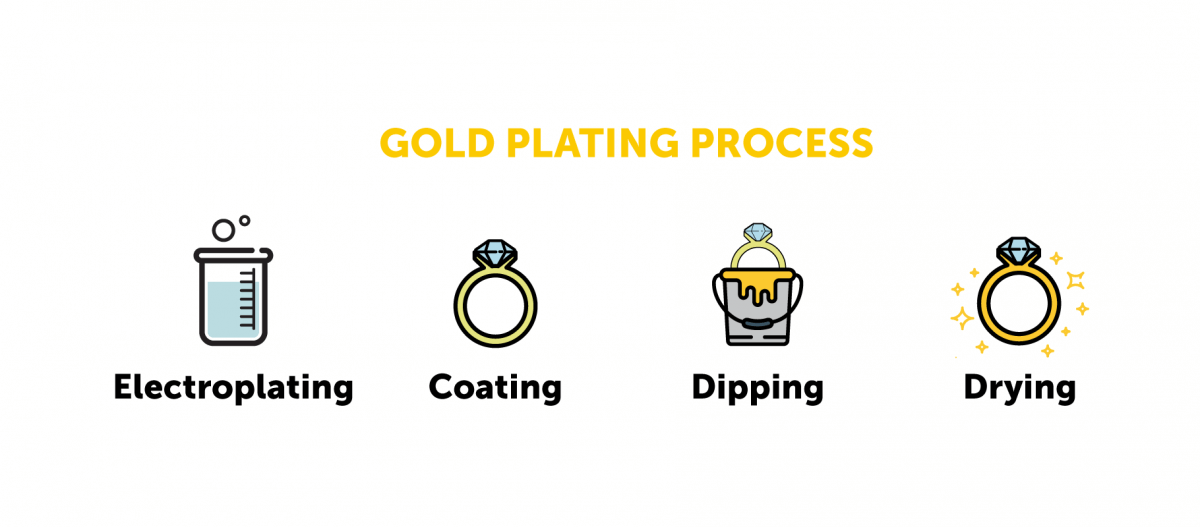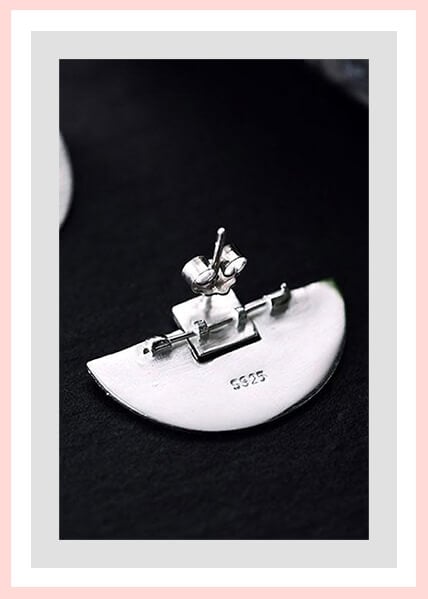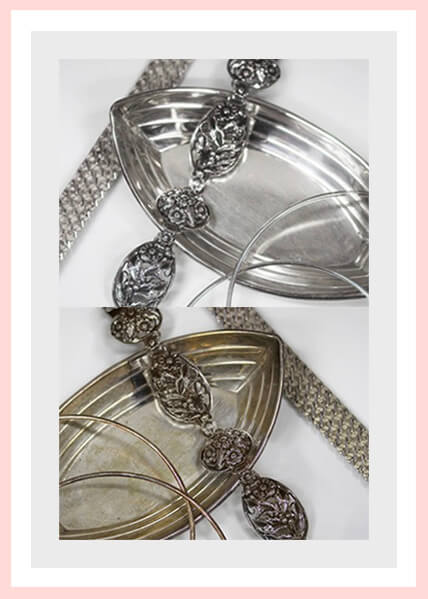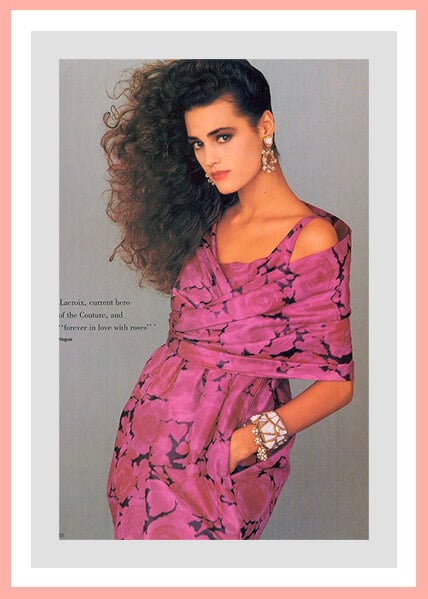Your Cart is Empty
BLACK FRIDAY SALE - UP TO 50% OFF SITEWIDE
BLACK FRIDAY SALE - UP TO 50% OFF SITEWIDE
test
A column with no settings can be used as a spacer
Link to your collections, sales and even external links
Add up to five columns
A column with no settings can be used as a spacer
Link to your collections, sales and even external links
Add up to five columns

What Does Gold Plated Jewelry Mean | Everything You Need
 Rehana Jewelry Metals
Rehana Jewelry Metals
April 11th, 2021 16 minute read
Listen to article
Audio generated by DropInBlog's Blog Voice AI™ may have slight pronunciation nuances. Learn more
Gold jewelry oozes class and elegance, no doubt about that. However, its exorbitant price tags don't go hand in hand with the budget of most people. Gold plated jewelry steps up to create a balance between look and price.
Besides having a suave look, this jewelry type comes at a fraction of the cost of real gold. In fact, it looks just like gold and not many people can tell the difference just by looking at it.
Curious to know the details about gold plating? Bear with us as we are going to explain everything.
Table of Contents
- WHAT IS GOLD PLATING?
- IS GOLD PLATED REAL?
- GOLD VS GOLD PLATED JEWELRY
- WHAT IS SOLID GOLD?
- WHAT IS GOLD PLATED JEWELRY?
- HOW IS GOLD PLATED JEWELRY MADE?
- IS GOLD PLATED JEWELRY HYPOALLERGENIC?
- HOW TO DETERMINE IF YOUR JEWELRY IS SOLID GOLD OR GOLD PLATED:
- IS GOLD PLATED JEWELRY WORTH ANYTHING?
- HOW LONG DOES GOLD PLATED JEWELRY LAST?
- DOES GOLD PLATING FADE AND TARNISH?
- MAINTENANCE TIPS FOR GOLD PLATED JEWELRY
- HOW TO RESTORE JEWELRY WITH GOLD PLATING
- PROS OF GOLD PLATED JEWELRY
- CONS OF GOLD PLATED JEWELRY
- Conclusion
WHAT IS GOLD PLATING?
Gold plating refers to a method of coating the surface of a metal (which is mostly silver or copper) with a thin layer of gold. Some other metals gilded with gold are stainless steel, nickel, brass, titanium, and tungsten. However, not all of them are suitable for crafting jewelry.
Gold plating is done for crafting costume jewelry or making imitations of more expensive pieces. For example, a 14k solid gold necklace can cost as much as US$7,000 while its gold plated counterpart will be just a few dollars.
The origin of gold-plating has its root in the early 19th century. Luigi Brugnatelli — an Italian chemist — invented this method in 1805. He applied a thin layer of gold onto a silver article to create the plating.
With this technique, Brugnatelli brought the golden aesthetic to the reach of mass people. The beauty of gold had fascinated people in all eras but only the elites could afford it before the invention of plating.
IS GOLD PLATED REAL?
Yes, gold plating is real gold but is much more inexpensive because of containing only a little gold.
Except for the amount of gold, real gold and gold plating jewelry differ in their making process too. Needless to say that there is also a big price gap between these two types.
GOLD VS GOLD PLATED JEWELRY
The difference between solid gold and gold-plated jewelry is in the metals they contain. In gold jewelry, solid gold is mixed with other metals in varying amounts, while in gold plated jewelry some non-gold metal alloys are covered with a thin layer of gold.

Curious to know the differences between jewelry made of gold and gold plating? Keep on reading!
WHAT ISSOLID GOLD?
Solid gold is nothing but gold and a minimal percentage of other materials. The metal has a shiny luster with buttery yellow color. Just like pure silver, pure gold is soft and malleable that you can scratch and bend very easily.
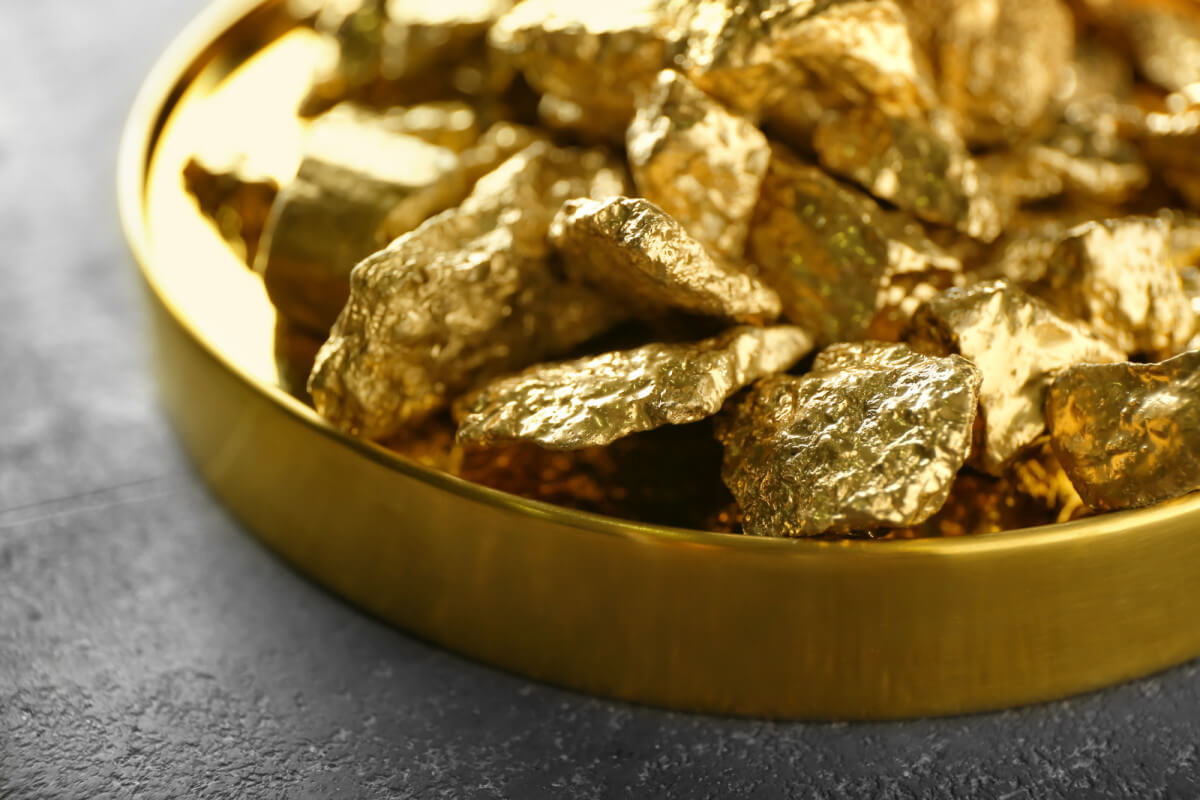
Solid Gold Nuggets
How is solidgold jewelry made?
You cannot make jewelry with solid gold because of its soft nature. A pure gold necklace or bracelet will lose shape and catch scratches quite easily. To make it durable and hard enough to hold the shape, all types of solid gold jewelry pieces are made of a gold alloy.
An alloy is a combination of two metals. So, the gold alloy contains pure gold and another metal, which could be silver or copper. Melted gold is mixed with a small amount of another metal to craft gold jewelry.
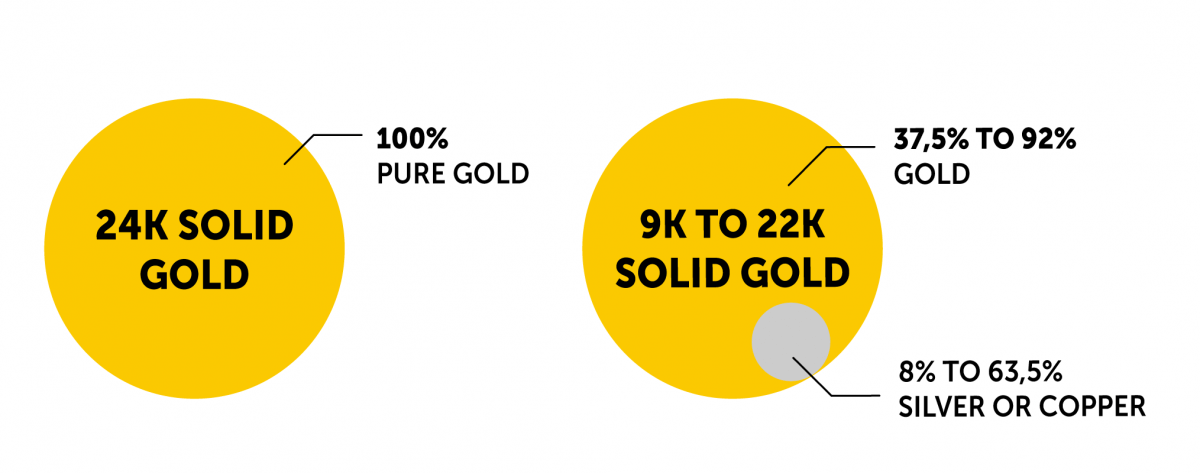
The purity ratings of gold
Karat ratings are the standard way to determine the purity of gold jewelry. The purest is the 24 karat (99.9% gold) but you cannot use it for making any ornamental pieces due to its malleable nature.
The most commonly used karat ratings and their gold percentages are:
Twenty-two karat jewelry is the most valuable because it features the highest percentage of gold other than 24 karat. Nine karat pieces are the lowest category among all because they contain only 37.5% of gold.
Twenty-two karat jewelry is the most valuable because it features the highest percentage of gold other than 24 karat. Nine karat pieces are the lowest category among all because they contain only 37.5% of gold.
Is gold hypoallergenic?
Yes, pure gold is always hypoallergenic. But you will often hear from people having allergic reactions to gold jewelry. It happens because of the alloy mixed into it.
Except for 24 karat pieces, other gold percentages could cause more or less allergic reactions. If someone says that they can wear only 14k gold jewelry, it means that they are not allergic to the alloy used in that particular rating.
WHAT ISGOLD PLATED JEWELRY?
All gold plating is not the same. The factors that determine the quality are the base metal, craftsmanship standard, and party and thickness of the gold coating. Without expertise, it's tough to separate real gold jewelry from the plated ones.

All gold plating is not the same. The factors that determine the quality are the base metal, craftsmanship standard, and party and thickness of the gold coating. Without expertise, it's tough to separate real gold jewelry from the plated ones.
The purity ratings in gold plating
The gold used in gold plating has the same purity ratings as solid gold because both are the same metals. The difference lies only in their volume or thickness. In the case of plating, its purity ranges between 10 karat and 24 karat.
So, gold plated jewelry can have an 18 karat or 12 karat coating, depending on the purity of the liquid gold used for gilding the piece. However, the main difference is not the karat or the value but the color of the plating of various karats. The plating is more like a coloring that adds to the aesthetic instead of adding monetary value to the piece. With the increase of karat, the color becomes yellower.

There are a few more ratings for determining the quality of gold-plating, and they may vary from one country to another.
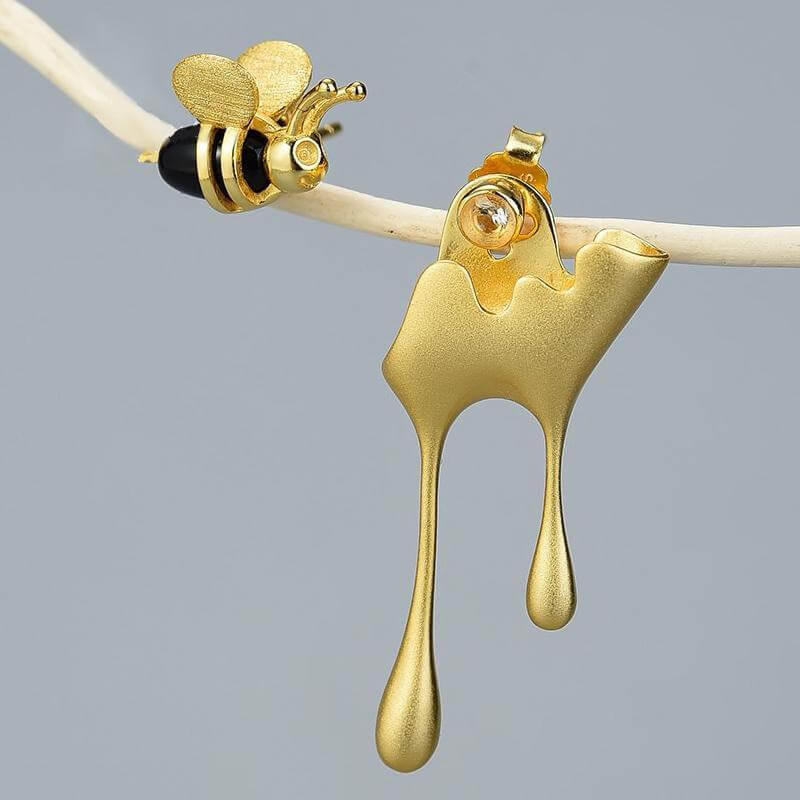
18k Gold Plated 925 Sterling Silver Honey and Bee Mismatched Earrings by Vinty Jewelry
HOW IS GOLD PLATED JEWELRY MADE?
You might be wondering about the making process of gold plated jewelry. As it's not solid gold, its manufacturing is quite different.
- Electroplating:
Electroplating is the process used for plating or gilding jewelry. At first, the jewelers make the piece with the core metal (like silver or nickel). It cannot have any pollutants, as the gold won't bond otherwise. So, proper cleaning is the next step.
- Coating:
The core metal may cause a chemical reaction with gold, so it has to be coated with a layer of high-quality nickel. In this way, the base metal cannot taint and spoil the gold layer.
- Dipping:
Liquid gold is kept in a container and the jewelry piece is dipped in there to create the plating. To fuse the gold into the core metal, a positive electrical charge is transmitted into the container.
- Drying:
A few dippings might be necessary to get the desired thickness. The last step is to set the jewelry piece aside for the coating to dry up and set onto the surface.
Click here to see how to do gold plating at home.
What Is the Ideal Thickness of Coating?
The standard thickness of the gold coating is between 0.17 and 2.5 microns or micrometers (μm). This is the standard unit of length used for measuring the thickness of gold plating and other similar things with a microscopic length.
Gold plating thickness determines its durability. The more the microns, the better the chance for the gold plating to last with usage.
A 0.17 micron of coating contains only 0.05% of gold and such layers are extremely thin. Known as gold washing or flashing, this coating wears off fast and quite easily. because of minimal exposure to rubbing and rough wear, A 0.17-micron thick coating is ideal for earrings, lockets, and brooches.
The pieces that are likely to undergo heavy wear and tear like rings and bracelets should have gold plating thickness between 0.5 and 1.0 microns. These are still pencil-thin layers but not quite flimsy to get rubbed off easily.

If you want durable gold plating, choose a piece with 2.5 microns of thickness. This one lasts longer than other plating options.
However, a thin coating does not make gold plated jewelry trash. They have their own beauty and a specific price value. Real gold is used in making them but they are not as valuable as gold because of how little gold is used.
IS GOLD PLATED JEWELRY HYPOALLERGENIC?
The gold plating itself is hypoallergenic but other metals in the jewelry piece can cause allergic reactions. Especially, when the external golden layer peels off, the underneath nickel comes into contact with the skin. Also, the core metals, such as copper, zinc, or silver, can cause reactions.
Before purchasing jewelry with gold plating, learn about the metal alloys used in it. Avoid the ones that have metal you are allergic to.
HOW TO DETERMINE IF YOUR JEWELRY IS SOLID GOLD OR GOLD PLATED:
How many times have you looked at a piece of gold jewelry and wondered if it's real or not? Do the pieces you got as wedding gifts look too bright or too dull? What does that mean? Well, you can apply these tips to differentiate between solid gold and gold plated jewelry.
1- Gold Plated Markings
To identify the real ones, you should look for stamps. The standard markings for this jewelry type are: GP, GEP, HGE, HGP.
Genuine gold plating jewelry may have no marking at all. Unlike solid gold and sterling silver jewelry, there are no strict rules for stamping the gold platedjewelry.
To avoid ending up with a cheap counterfeit, always purchase from a reputable brand or a big-box store.
A gold jewelry piece that does not contain any of these markings can still be genuine gold. But you have to perform the following tests to be sure.

2- Magnetism
Gold does not have any magnetic properties. So, if your jewelry piece is pulled in by a magnet, it possibly contains some metals other than gold.
However, you cannot make a decision based on this test only. Genuine gold jewelry has metal alloys that may have some magnet-drawing components.
On the other hand, a gold plated jewelry piece may not respond to the magnetic pull because its base metal is not magnetic. In that case, any amateur may mistake it for real gold.
3- Color
The more the amount of gold in a jewelry piece, the brighter its color will be. A piece with a 24K gold has a bright yellow shade. The color will be paler with the decrease in the karat.
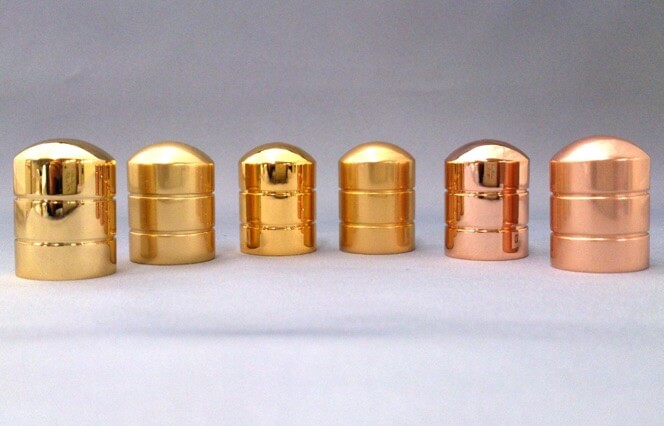
4- Acid test
An acid test is a failsafe method of finding out whether a piece of jewelry is solid gold or gold plated. The acid will change the jewelry color, depending on the amount of gold and the presence of other metals in it. However, it takes an expert to perform this analysis.
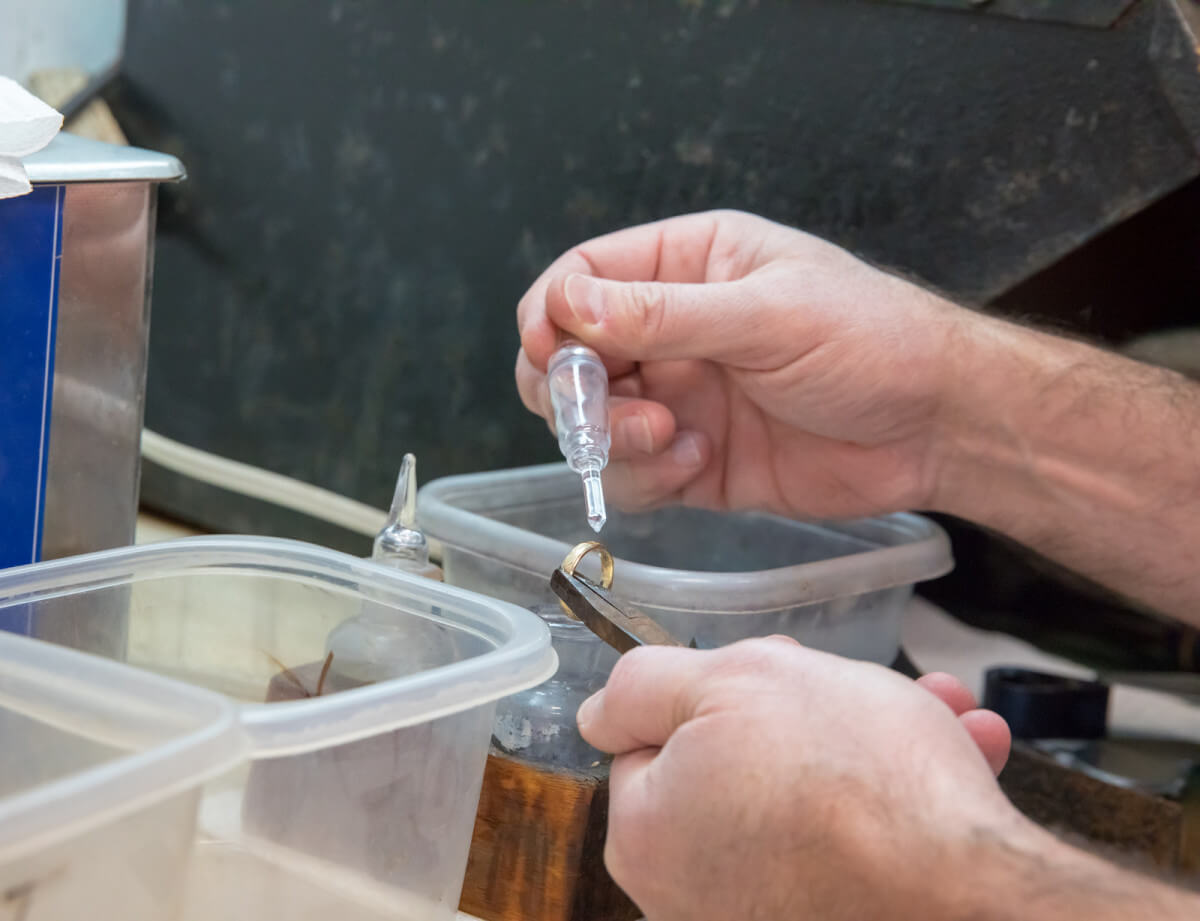
5- Scratch test
This particular test also needs the expertise of a professional jeweler since it warrants cutting the piece deep enough to reveal the base metal. Solid gold has a uniform composition throughout, so if you see a different metal, it must be a gold
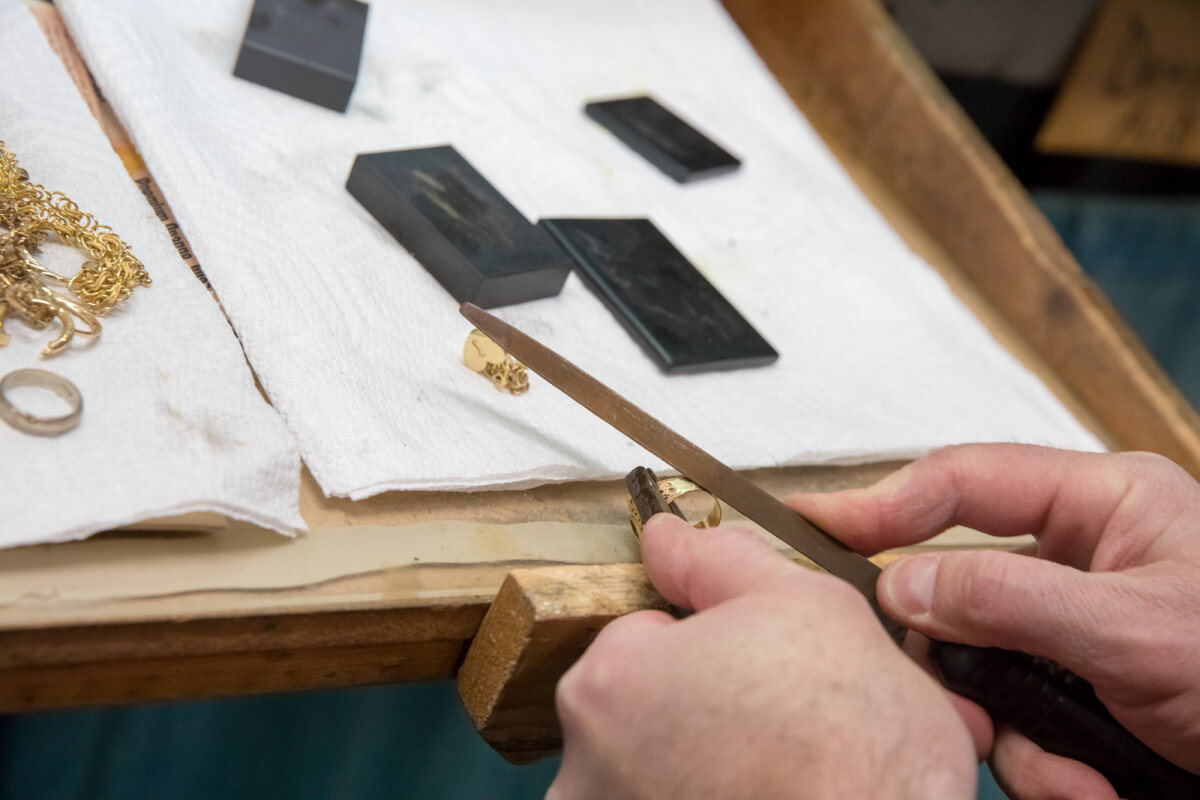
IS GOLD PLATED JEWELRY WORTH ANYTHING?
Not much despite using real gold. The gold coating on the jewelry pieces is very thin, could range between a few microns to a fraction of one micron. Such little amount of gold does not hold any real value.
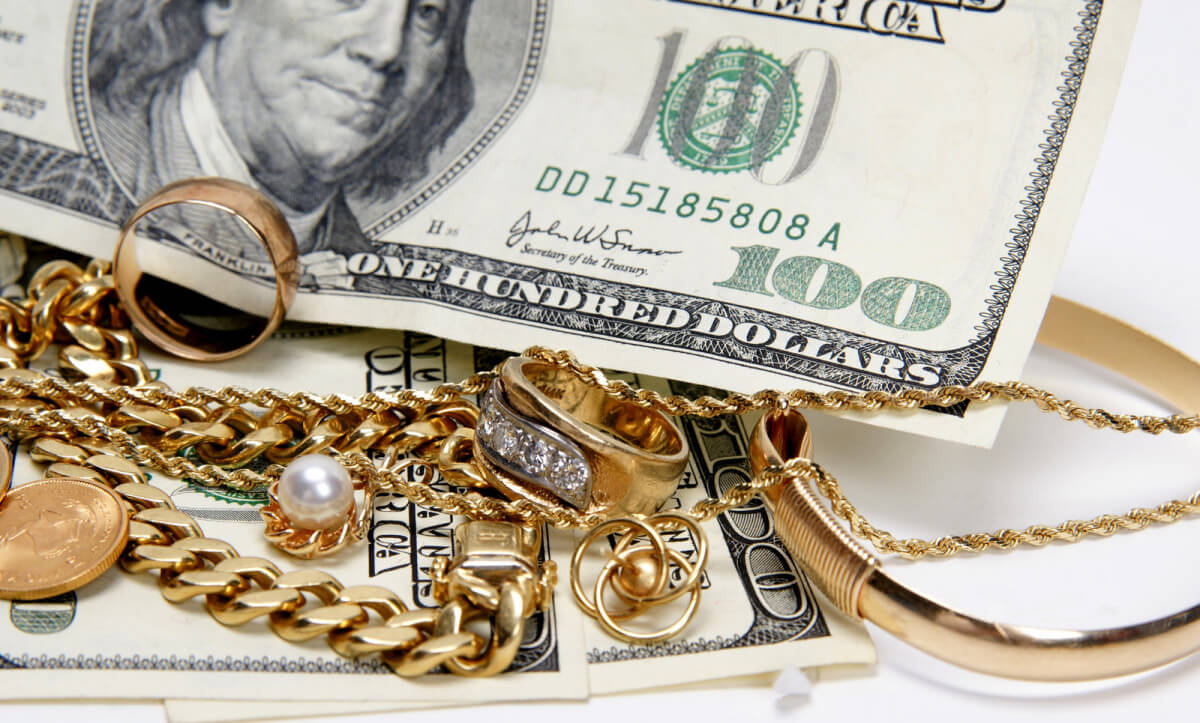
The core metal of such jewelry is basically copper, nickel, or something equally inexpensive.
HOW LONG DOES GOLD PLATED JEWELRY LAST?
The usual lifespan of the plating is more or less two years. But you wouldn't want to throw the jewelry out after that. Why does gold plating fade and how to recover its luster? Let's find out:
DOES GOLD PLATING FADE AND TARNISH?
The tarnishing of gold plating jewelry is a surprise to many people since gold does not react with outside elements. Regardless of the quality of gold, it does not rust or corrode. What's the problem then?
Well, the problem lies with the other materials used in the jewelry. The molecules of the core metal eventually travel to the exterior gold layer, making it contaminated. The molecules react with the outside elements, triggering oxidation or corrosion.
The thinner the plating is, the sooner it will tarnish. However, the leeching of molecules can be slowed down by coating the base metal with a nickel layer. It protects the gold layer from inner contamination.
The Reasons for the Fading of Gold Plating
The tarnishing of gold plating jewelry is a surprise to many people since gold does not react with outside elements. Regardless of the quality of gold, it does not rust or corrode. What's the problem then?
Well, the problem lies with the other materials used in the jewelry. The molecules of the core metal eventually travel to the exterior gold layer, making it contaminated. The molecules react with the outside elements, triggering oxidation or corrosion.
protects the gold layer from inner contamination.
MAINTENANCE TIPS FOR GOLD PLATED JEWELRY
Any type of jewelry needs proper care and maintenance. The gold plating of your jewelry pieces will last for more than two years if you follow some simple tips:
Any type of jewelry needs proper care and maintenance. The gold plating of your jewelry pieces will last for more than two years if you follow some simple tips:
- Regular cleaning of jewelry pieces not only lengthens their life but also helps with retaining their luster. There are many professional-grade jewelry cleaning agents in the market. Mild liquid soap will also work as a DIY cleaning solution.
- Never use any harsh cleaning agent on gold plated jewelry. The cleaning brush should have soft bristles; otherwise, the gold layer can flake off.
- Only cleaning is not enough. Your hands should also be clean before touching and handling them.
- Jewelry with gold plating should not come in contact with any type of oil or chemical residue. After applying makeup, you should not touch them without washing your hands. Makeup residue may trigger a chemical reaction.
- Bad news if your skin is oily or you sweat too much. Oils and sweat from our body contain salt and chemicals that can tarnish the jewelry. If it's a hot day, don't forget to wipe your bracelet or pendant a few times with a soft tissue.
- Don't rub the jewelry on anything because it can peel off the exterior layer and expose the metal underneath. If you wear a gold plated bracelet or ring, try not to stroke it frequently.
- Salt and chlorine are bad for gold plating. So, take them off before going to the beach or swimming in the pool.
HOW TO RESTORE JEWELRY WITH GOLD PLATING
Jewelry may tarnish even after taking good care of it. What to do to restore its previous shine?
Well, replating seems to be the most practical solution if the gold plating fades after a few years. The frequency of the replating will depend on certain factors:
● Quality of the jewelry piece
● The thickness of the gold coating
● The type and color of the core metal
● Presence of the nickel layer
● Frequency of exposure to the outside elements
The restoration process is quite inexpensive. If you don't have the budget for solid gold jewelry but don't want to sacrifice the beautiful look either, choose to re-plate the item. Take the service of a good jewelry shop for an impeccable job.
PROS OF GOLD PLATED JEWELRY
● Looks like real gold: The main draw of these jewelry items is their uncanny resemblance to real gold items. It's hard for an untrained eye to spot the difference.
● Affordable: Another huge plus point of plated jewelry is its budget-friendly price. You can purchase a piece (necklaces, earrings, or rings) from $5 to $50.
● Trendy design: You can get them in a wide variety of designs, which is highly tempting in this time of fast-fashion madness. As price is not a concern anymore, it's possible to buy as many pieces as you want to create your own unique style.
CONS OF GOLD PLATED JEWELRY
● Fades slowly: Unlike a solid gold item, a plated jewelry piece with tarnish over time. It happens because of its core metal's chemical reaction.
● Unsuitable for wearing in water: Immersing in water can completely wear off the gold layer. so, take it off when swimming or in the shower.
● Prone to chipping: The exterior gold layer may chip off over time. Also, it gets scratched easily.
●
Conclusion
Gold plated jewelry does not come close to gold jewelry in terms of monetary value. However, if you don't want to wear some counterfeits or a poor imitation of real gold pieces, gold plating is a great option. It has the look of real gold, so you don't need to compromise with your style and overall appearance. There are literally hundreds of variations that you can get access to without breaking your bank.
Related Articles
What Is 925 Sterling Silver? | "925" Meaning On Jewelry
10 minute read
April 8th, 2021
Cleaning Sterling Silver: Low-Cost Homemade Solutions
10 minute read
June 7th, 2021
80s Fashion – What Did People Wear to Feel Stylish?
16 minute read
May 15th, 2021

